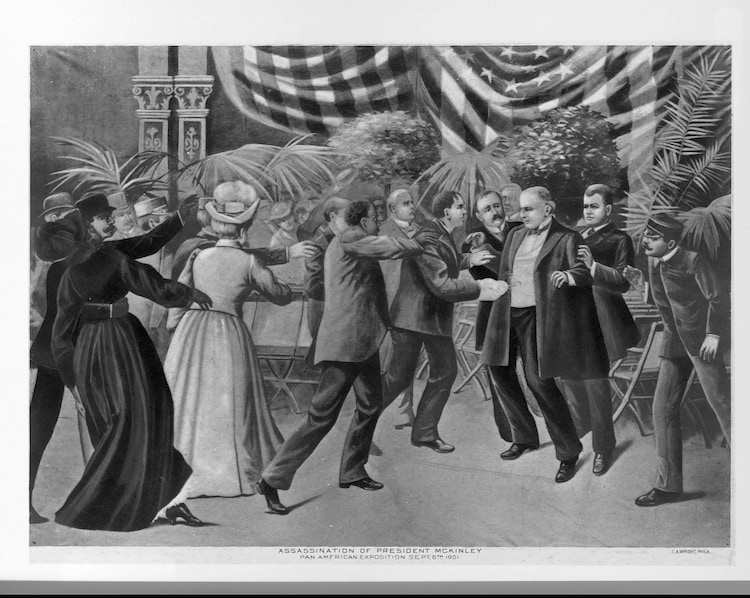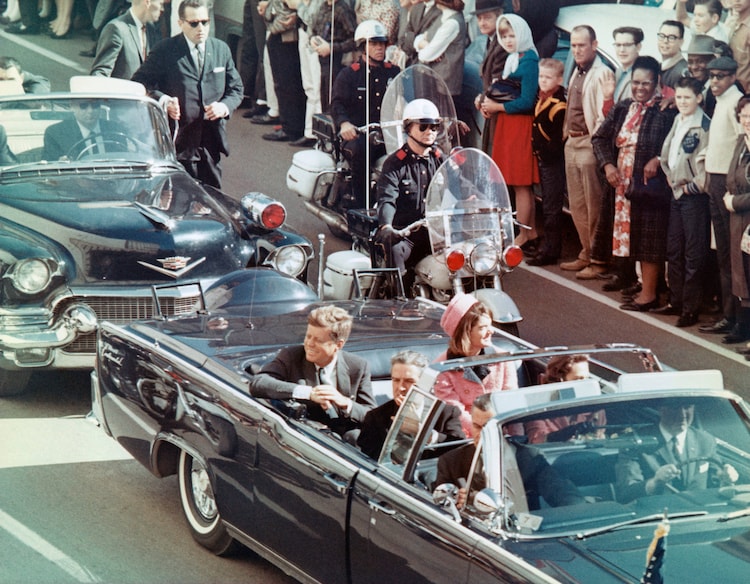With the attempted assassination of former US President Donald Trump by a 20-year-old gunman at a Pennsylvania rally on Saturday, the persistent threat of political violence, including killing of Presidents and presidential candidates, in the United States has surfaced again.
Although the former Republican President escaped safely after being injured, the US has seen at least four presidents being killed while still in office, including the 16th President Abraham Lincoln in 1865, and the 35th US President John F Kennedy in 1963.
Although the last President was assassinated back in 1963, the US has a history of political violence from as early as the 19th century. How could one forget the recent siege of the seat of the US government, Capitol Hill, by the supporters of outgoing President Donald Trump.
The attack on Trump, a former president and Republican frontrunner for the 2024 US presidential polls, highlights the constant threat that looms over the occupants of the Oval Office, and those who seek and claim it.
The failed assassination attempt on Trump, thus, added a bullet to a long and disturbing history of assassination of US presidents.
US PRESIDENTS ASSASSINATED IN OFFICE
Here are the four American Presidents who were killed in office:
The 16th President of the United States, Abraham Lincoln, was the first president to be assassinated. On April 14, 1865, stage actor John Wilkes Booth shot Lincoln while he was attending a special performance of the comedy “Our American Cousin” at Ford’s Theatre in Washington, DC, accompanied by his wife, Mary Todd Lincoln.
After being shot in the back of the head, Lincoln, who was transported to a house across the street from the theatre for medical care, succumbed to his injuries the following morning.
Booth’s motive, later, was linked to Lincoln’s advocacy for Black rights. Two years prior, in 1861, Lincoln issued the Emancipation Proclamation, which declared the freedom of slaves within the Confederacy.
The 20th US President, James Garfield, became the second US president to be assassinated in 1881. Six months into his term, Garfield was shot by Charles Guiteau at a train station in Washington, as he was en route to New England.

Alexander Graham Bell, the inventor of the telephone, made an unsuccessful attempt to locate the bullet lodged in Garfield’s chest using a device specifically created for this purpose. Despite medical treatment at the White House, Garfield succumbed to his injuries a few months later.
Republican President William McKinley was shot in 1901, after delivering a speech in Buffalo, New York. While greeting the public in the receiving line, he was shot twice in the chest at close range.

Initially, doctors were optimistic about his recovery, but after gangrene developed around the bullet wounds, he died within a week, during the early months of his second term.
John F Kennedy, the 35th President, was assassinated in 1963 during a visit to Dallas with First Lady Jacqueline Kennedy. He was fatally shot by a concealed sniper as his motorcade passed through Dealey Plaza in downtown Dallas.
Kennedy was immediately rushed to Parkland Memorial Hospital, where he was pronounced dead shortly after arrival. Vice President Lyndon B Johnson was sworn in as President in a conference room aboard Air Force One, marking the only instance of a presidential oath of office being administered on an aeroplane.

The assassin, Lee Harvey Oswald, was apprehended shortly after the shooting, identified as the sniper from a perch in the nearby Texas School Book Depository. However, two days later, as Oswald was being transferred from police headquarters to a county jail, he was shot and killed by Dallas nightclub owner Jack Ruby.
Apart from sitting Presidents, there have been several notable attempts on the lives of US presidents, where they dodged bullets.
President Franklin D Roosevelt narrowly escaped an assassination attempt in 1933, while Presidents Gerald R Ford, Ronald Reagan, Bill Clinton, and George W Bush, each of whom faced threats during their terms in office or campaigns, escaped unhurt.
Republican front-runner Donald Trump, in the already heated election campaign, joins the list of top White House aspirants who have been attempted to be killed.
POLITICAL VIOLENCE IN RECENT US POLITICAL HISTORY
Marked by the attack on Capitol Hill in January 2021, in recent years, political violence has continued to plague the United States.
Among the “most imminent threats” that the US faces, is according to former US Attorney Nick Brown, “the rise and risk of political violence”.
In 2011, then-Representative Gabrielle Giffords, a Democrat from Arizona, suffered brain damage after being shot in the head at an event where six people lost their lives.
In 2017, a gunman attacked a Republican congressional baseball practice, injuring then-House Majority Whip Steve Scalise and three others.
The 2021 storming of the US Capitol during the certification of President Joe Biden’s election victory was a stark reminder of the ongoing risks. The incident on Saturday, where Trump was injured and two individuals, including the assailant, lost their lives, has thus, raised concerns about escalating political tensions.
Not just reports, experts have also voiced concerns about the worrying trend.
“In a country where a great many Americans do not believe that their democracy is healthy or particularly functional, and where a large majority of Americans believe that the domestic political opposition is out to destroy that democracy, this is the worst sort of event that can happen in that environment,” the president of the Eurasia Group, Ian Bremmer, said in a video on X.
ALARMING RISE OF POLITICAL VIOLENCE IN THE US
Ian Bremmer, who called the Saturday incident “intolerable behaviour in a democracy”, added that he was “deeply worried that it presages much more political violence and social instability to come.”
In this wake, a number of surveys and polls further cemented the views of alarm about the trend.
A Reuters investigation from 2023 found that political violence in the US has reached its worst levels since the 1970s, with much of the violence now aimed at people rather than property, which translates to personal risks faced by political figures too.
Since the January 6 attack on the US Capitol, a Reuters investigation identified 213 cases of political violence, with two-thirds being physical assaults and confrontations, and out of 76 individual acts of violence, 18 resulted in fatalities.
Another national survey by the Chicago Project on Security and Threats, Robert Pape conducted in June revealed that 10% of American adults, a third of whom are gun owners, agreed that “the use of force is justified to prevent Donald Trump from becoming president”.
Robert Pape, who is also a professor at the University of Chicago, told NBC news, “We also need to worry about threats in retribution to President Biden. Our survey shows 7% of American adults (18 million) support forcing him to restore Trump to the presidency, half of whom own guns”.
“Political leaders from both parties and at all levels of government — the President, Senate and House leadership, governors, and mayors must immediately condemn political violence from whichever side of politics it arises,” added Robert Pape.
The increasing instances of political violence in the US, hence, as experts feel, underscore the urgent need for a united, non-partisan front against such threats to democracy from all political leaders. Going forward, July 14, would not be an ordinary day for the United States.